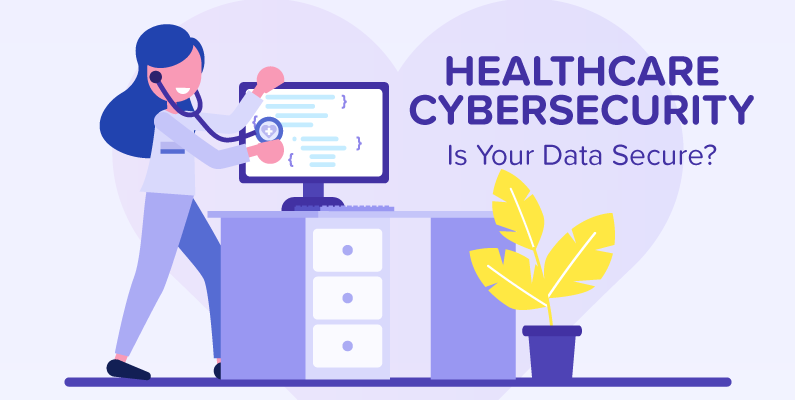Cybersecurity in Healthcare
What is Healthcare Cyber Security?
In today’s electronic world, cybersecurity in healthcare and protecting information is vital for the normal functioning of organizations. Many healthcare organizations have various types of specialized hospital information systems such as EHR systems, e-prescribing systems, practice management support systems, clinical decision support systems, radiology information systems and computerized physician order entry systems. Additionally, thousands of devices that comprise the Internet of Things must be protected as well. These include smart elevators, smart heating, ventilation and air conditioning (HVAC) systems, infusion pumps, remote patient monitoring devices and others. These are examples of some assets which healthcare organizations typically have, in addition to those mentioned below.

Cyberattacks against healthcare organizations can impair their ability to provide critical care. Ransomware can encrypt important data and Distributed Denial of Service DDoS attacks can bring critical systems down. According to a recent survey by the Ponemon Institute, over 20% of healthcare organizations have experienced increased patient mortality rates after a cyberattack, and another 57% report that these attacks result in poor patient outcomes.
Why the Healthcare Industry is a Target for Cyberattacks
Healthcare organizations are prime targets for cybercriminals for a few different reasons. One is that these companies have access to extremely sensitive and valuable data, including patient health records and payment card data. An attacker with access to this data can sell it at a premium or encrypt it and demand a ransom for its release.
Healthcare organizations also commonly struggle to secure their increasingly complex IT environments. Healthcare organizations and their patients rely on a growing number of networked devices, providing attackers with numerous potential avenues for attack.
Challenges of Healthcare Cybersecurity
Healthcare organizations face various challenges when attempting to protect their systems and their patients’ data against cybersecurity threats. Some of the primary cybersecurity challenges that healthcare organizations contend with include the following:
- Complex Infrastructure: Healthcare facilities such as hospitals, clinics, labs, and other medical environments offer a broad and complex attack surface. These facilities include networks, cloud infrastructure, desktop, and mobile endpoints, as well as network-connected IoT devices. The latter are sensor-driven medical devices that track and monitor in real-time; most are not designed with security in mind.
- Access Management: Healthcare’s fluid environments also introduce complex layers of user types and access privilege levels that can make sensitive personally identifiable information (PII) and other medical data ripe for cyber thieves. The emergence of breaches initiated by nation-state-sponsored cyber gangs can select specific targets to damage reputations.
- Regulatory Compliance: Healthcare organizations have access to highly sensitive data that must be appropriately protected. Healthcare cybersecurity programs must be Health Insurance Portability and Accessibility Act (HIPAA) compliant.
How Healthcare Organizations Can Protect Themselves
Securing healthcare organizations against cyber threats requires deploying security solutions designed to meet the unique needs of the various components of their complex infrastructure. Vital security capabilities include:
- Internet of Things (IoT): Healthcare organizations are increasingly dependent on Internet of Medical Things (IoMT) devices to perform scans and offer critical care. Like other IoT devices, these solutions commonly have weak security and access to very sensitive data, making IoT-focused security essential.
- Cloud: Many healthcare organizations are adopting cloud-based infrastructure for data storage and application hosting. According to a Ponemon survey, cloud compromise was one of the four most common types of cyberattacks that healthcare organizations face.
- Endpoint: Healthcare organizations commonly have a variety of endpoints, often including legacy systems with unpatched vulnerabilities. Endpoint security solutions can help to identify and prevent attacks against these devices exploiting these vulnerabilities.
- Mobile: Mobile devices provide patients and healthcare providers with convenient access to medical data. On-device security is essential to ensuring that malicious apps can’t access sensitive data on mobile devices.

